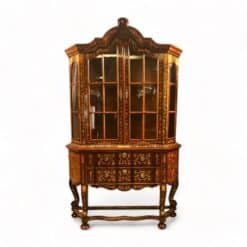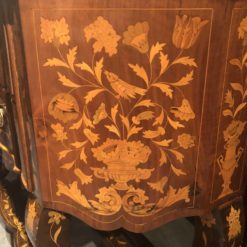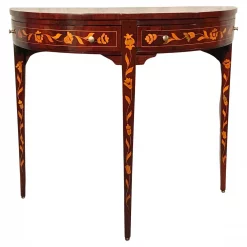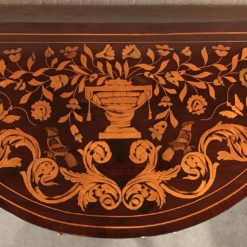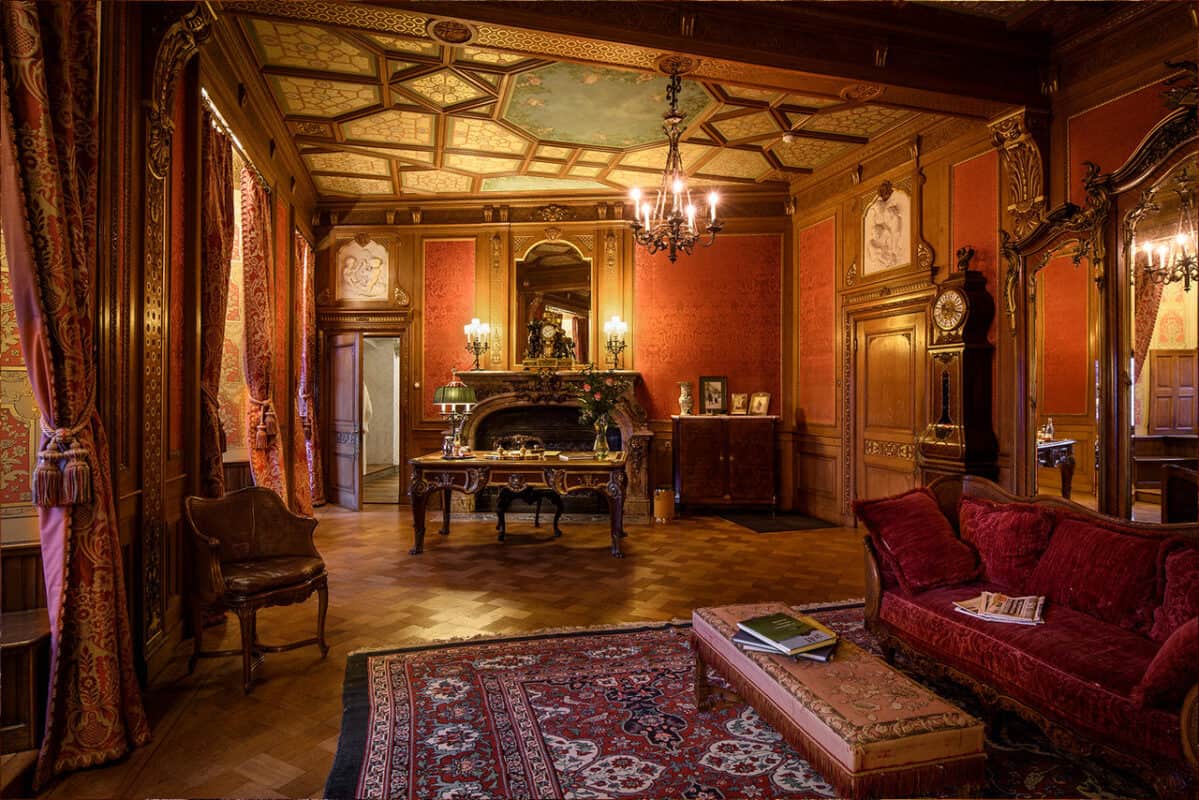Best Sellers
Uncategorized
Dutch Antique Furniture Styles: Medieval to 19th-century Elegance
Dutch Antique Furniture Styles: A Journey Through Medieval to 19th-century Elegance
Dutch Furniture Through the Ages
The history of Dutch furniture styles is a captivating journey that encapsulates the societal transformations from medieval times to the 19th century. The development of furniture design in the Netherlands is intricately linked to the socio-economic conditions, cultural influences, and technological advancements of each era. In this detailed exploration, we will unravel the distinctive characteristics of Dutch furniture during various periods, focusing on tables, chairs, sofas, cabinets, and dressers.
Medieval Times (500-1500 AD):
The medieval period witnessed a pragmatic approach to Dutch furniture design. Furniture, primarily functional, reflected the hierarchical nature of the feudal society. Nobility and the affluent enjoyed more elaborate pieces, often crafted from durable materials such as oak and walnut.
Tables from this era were heavy and rectangular, boasting trestle bases for stability. Chairs, a luxury for the privileged, featured wooden frames and the occasional plush cushion for comfort. Cabinets and dressers, vital for storage, were crafted with meticulous detail but restrained in ornamentation, mirroring the modesty of the time.
Medieval Dutch benches were typically crafted from sturdy, locally sourced woods such as oak or chestnut, featuring a simple yet functional design with minimal ornamentation. These long, rectangular benches served as integral elements in communal spaces, providing both seating and, in some cases, practical storage beneath their solid wooden frames.
This ancient, oak Dutch bench dates back to 1500.
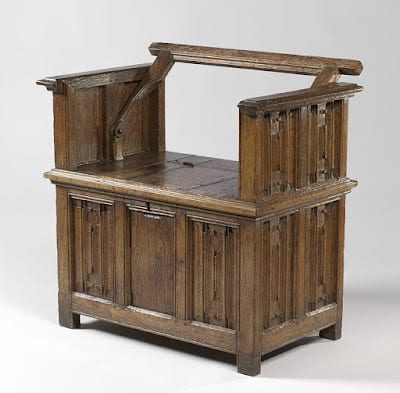
The Renaissance (14th- 16th Century)
In the Netherlands during the Renaissance period, furniture design underwent a revival of classical aesthetics and artistic ideals. Renaissance Dutch furniture was characterized by its elegance, symmetry, and harmonious proportions. Inspired by the cultural exchange and trade routes connecting Northern Europe with Southern Europe, Dutch craftsmen incorporated classical motifs and architectural elements into their designs. Tables and chairs featured straight lines, geometric shapes, and structural integrity, reflecting the influence of Renaissance architecture. Rich, dark woods such as oak and walnut were favored for furniture construction, often adorned with intricate carvings depicting floral motifs, mythological scenes, and allegorical figures. Renaissance Dutch furniture not only served practical purposes but also served as expressions of wealth, taste, and cultural sophistication, adorning the homes of nobility and affluent merchants during this flourishing period of Dutch art and culture
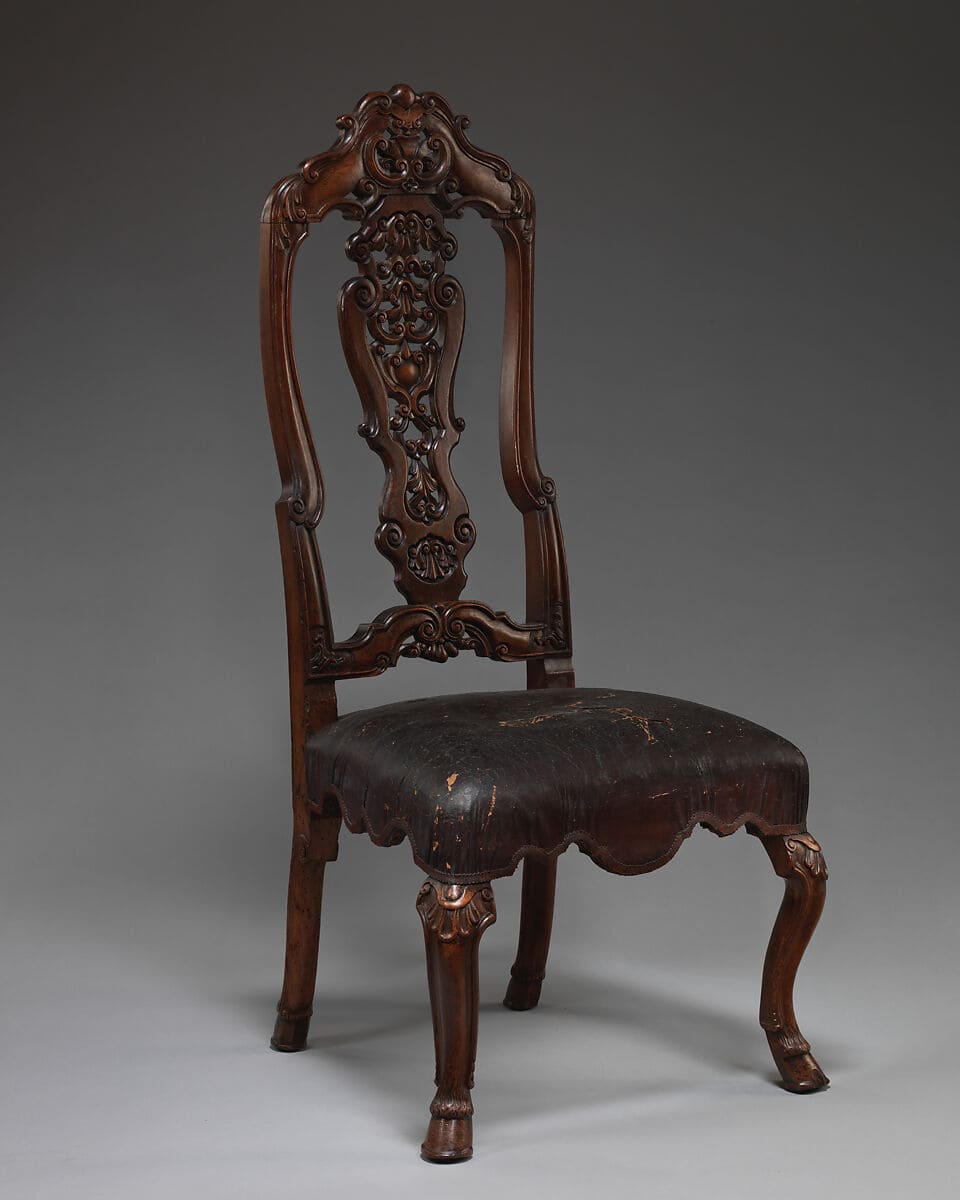
The Baroque Era (16th-17th Century)
During the Baroque era in the Netherlands, furniture design underwent a dramatic transformation, reflecting the opulence and grandeur characteristic of the period. Baroque Dutch furniture has elaborate ornamentation, extravagant detailing, and luxurious materials. Craftsmen embraced the dynamic and theatrical aspects of the Baroque style, resulting in furniture pieces characterized by exaggerated proportions, intricate carvings, and gilded embellishments. Tables and chairs featured curvaceous forms and sculptural elements inspired by nature, while cabinets and dressers showcased elaborate marquetry, inlay work, and intricate scrollwork. Baroque Dutch furniture served as both functional pieces and status symbols, adorning the homes of the affluent elite and contributing to the impressive interiors that defined the era’s architectural and decorative arts.
This elegantly curved Dutch Baroque secretary desk has three spacious drawers in the lower part. The writing flap opens to a beautiful interior with six small drawers, four open and some secret compartments. Small pilasters with brass capitals and bases flank the central small door.
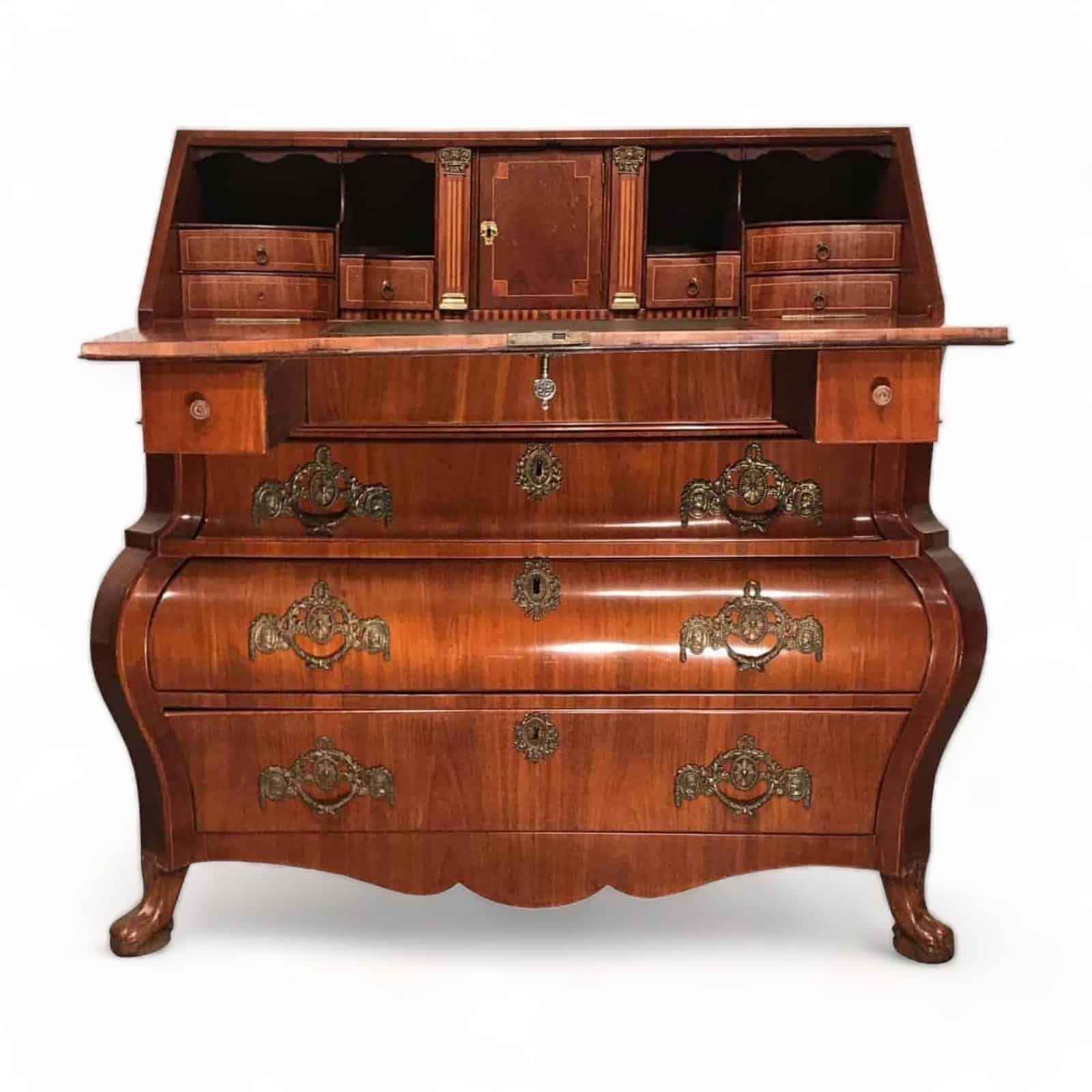
Dutch Colonial Period (1600-1800):
The Dutch colonial period witnessed a melding of influences from trade routes and the East India Company. This led to the creation of a distinctive furniture style. Rich materials like teak and mahogany were imported from colonies, contributing to the creation of unique and lush designs.
Tables and cabinets displayed intricate inlays and carvings inspired by Asian and Middle Eastern aesthetics. Chairs adopted a more open and airy design, often incorporating caned seats. The Dutch East Indies played a crucial role in introducing the intricacies of Indonesian craftsmanship to Dutch furniture, resulting in a captivating fusion of styles.
This Dutch Colonial furniture style cabinet showcases more than two hundred flowers embellishments. The use of bright yellow woods like barberry achieves a naturalistic palette.
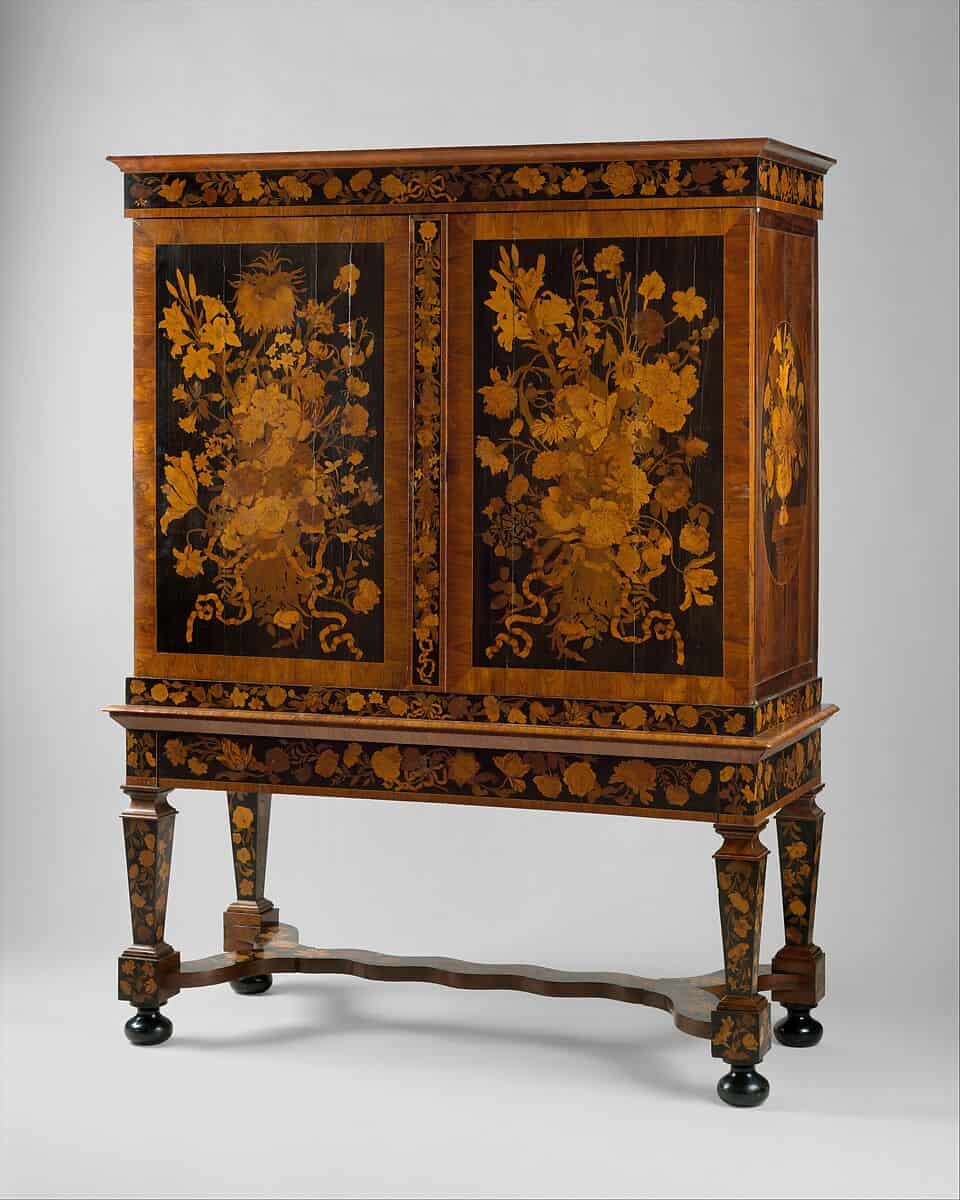
The game table is covered in hand laid marquetry in multiple woods over a solid mahogany base, with cabriole legs ending on slipper feet. This game table is a choice of either checkers, chess or cards and can also reveal an amazing inlaid writing desk that pops up with the push of a brass button and locks in place.
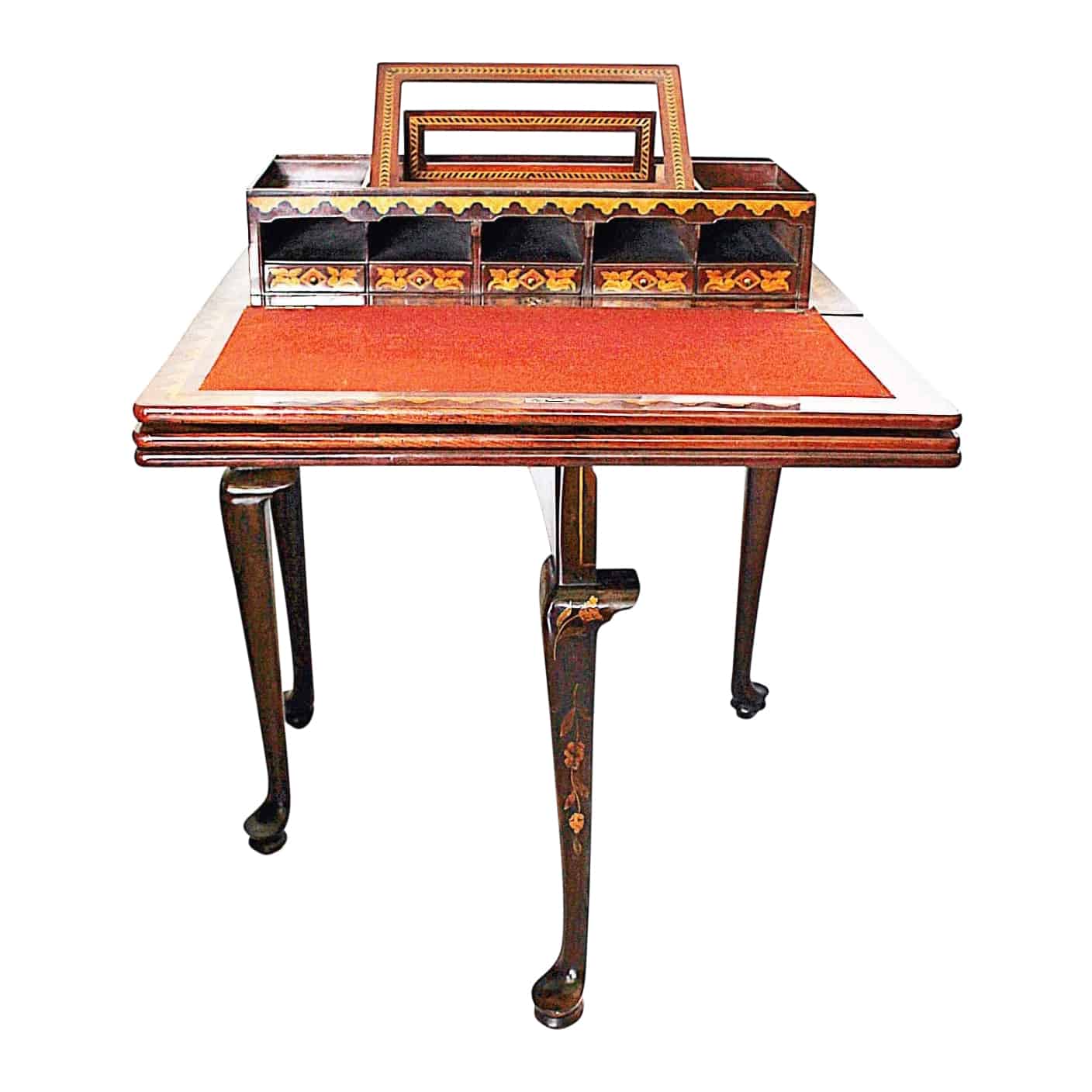
Rococo and Neoclassical Influences (1700-1800)
The Rococo and Neoclassical periods signaled a departure from the opulence of the Baroque era. Furniture design became more streamlined, emphasizing symmetry and classical motifs. This shift was a response to the Enlightenment and evolving political ideologies.
Tables and chairs adopted a lighter and more delicate design, featuring graceful curves and tapered legs. Cabinets and dressers embraced cleaner lines, often embellished with neoclassical motifs such as urns and laurel wreaths. The use of lighter woods, including fruitwood, gained popularity during this period.
This beautiful 18th century antique display cabinet comes from Holland and dates back to 1770-1780. It’s marquetry is representative of the era with exquisite flower and bird designs.
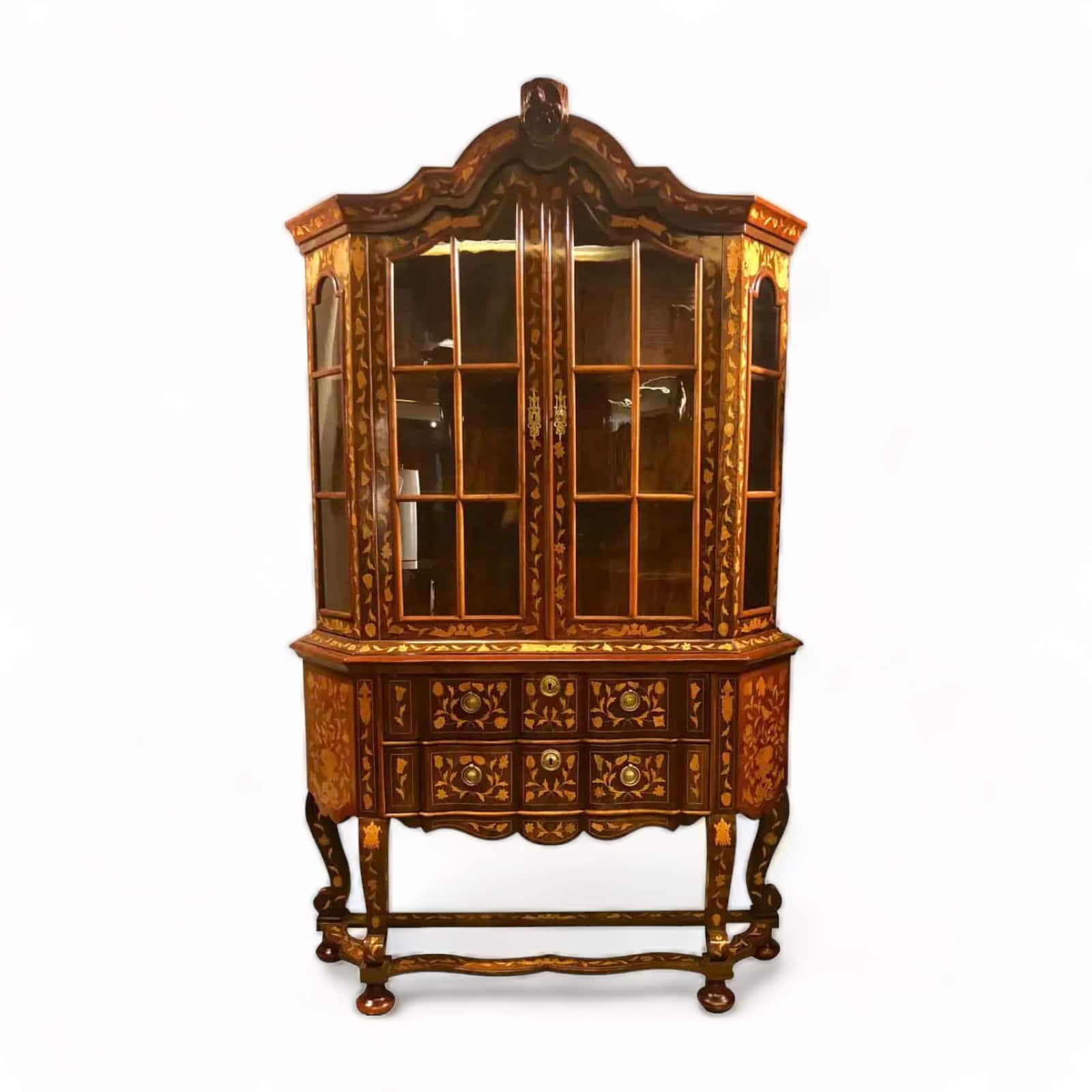
The card table has a gorgeous marquetry of flowers and birds decorate on its top. You can use it as a console table, and open the foldable top for the occasional card game.
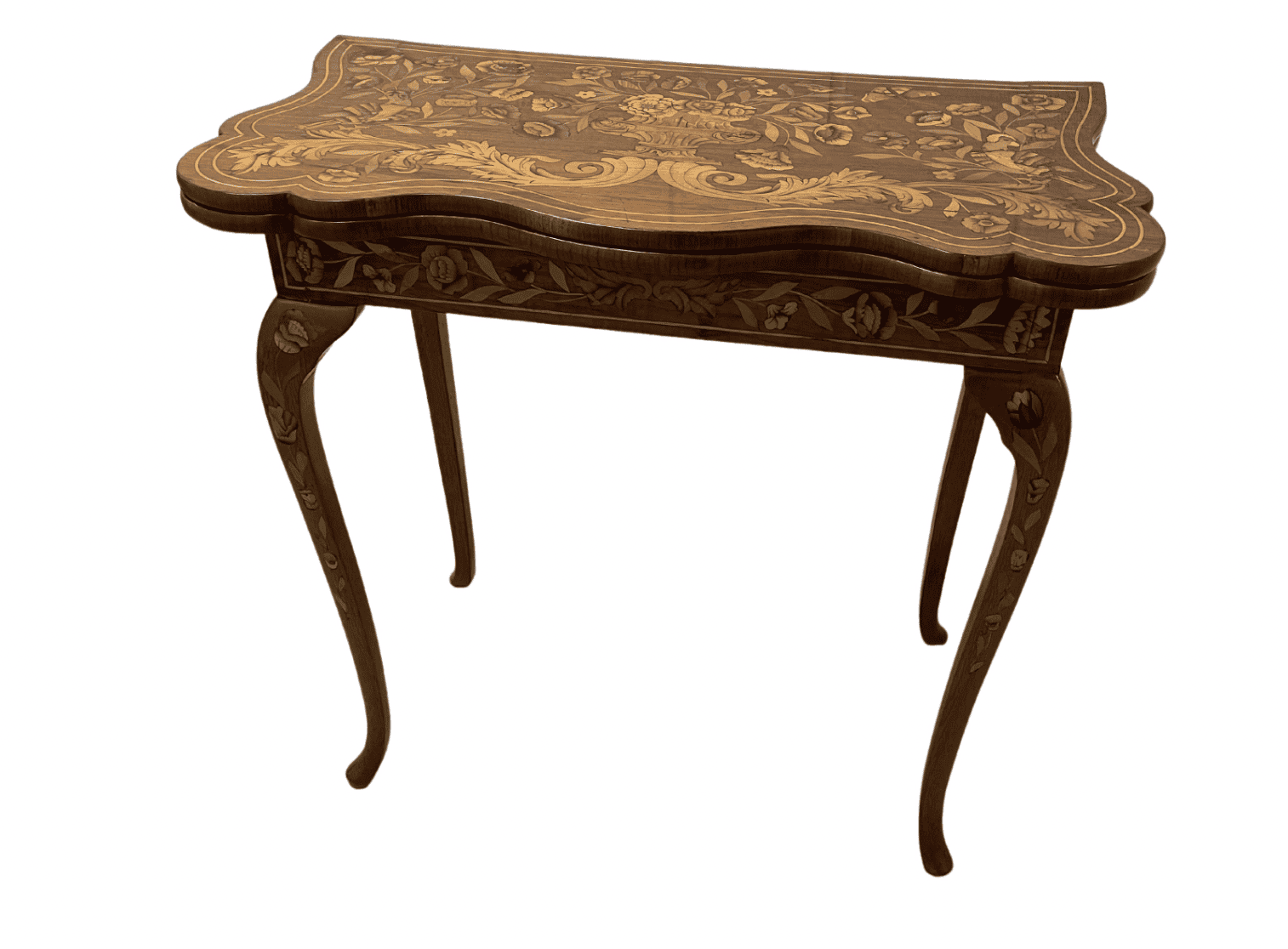
Industrial Revolution and 19th Century
The 19th century marked a significant departure in Dutch furniture styles with the advent of the Industrial Revolution. Mass production techniques led to more affordable and accessible furniture, democratizing stylish pieces for a broader segment of the population.
Tables and chairs became more standardized, featuring simpler designs to accommodate mass production. Cabinets and dressers often boasted glass doors, reflecting the growing importance of displaying and showcasing possessions. Upholstered sofas became a staple in Dutch homes, embodying a desire for both comfort and leisure.
Further, he couch’s upholstered arms display the increase in comfort in seating.
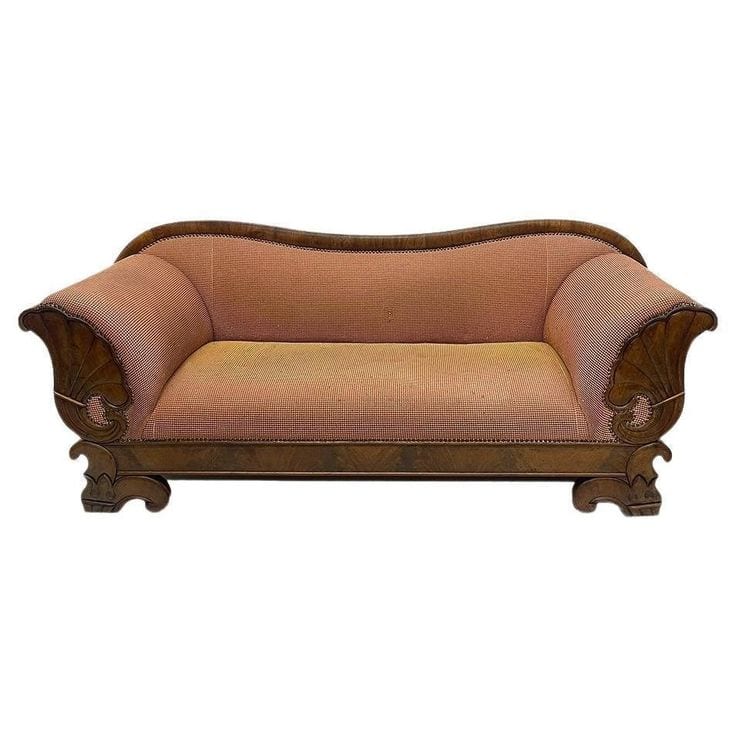
The Legacy of Dutch Furniture Styles
The evolution of Dutch furniture styles from medieval times to the 19th century is a testament to the dynamic interplay between social, economic, and cultural factors. Further, each era left an indelible mark on the design, materials, and functionality of furniture. Additionally, the evolving styles reflected the shifting tastes and aspirations of the Dutch people throughout time. In conclusion, the rich history of Dutch furniture continues to inspire contemporary designs, creating a timeless legacy that seamlessly blends tradition with innovation.

